G. L. Pease
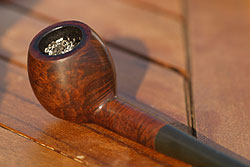 The weather has been strange. So much so that my typical summer smoking patterns have been interrupted by days of chill air and even near-rain surrounding the punishing heat of strong sunshine following moist mornings. Those who follow along closely know that my whim turns to different tobacco styles depending on the atmosphere, and on a daily basis, any attempt to predict what’s likely to find its way satisfactorily into my briars has been a multi-sided coin toss. One day last week, I decided that if I didn’t smoke up some of my longer-aged cigars, they’d probably incinerate themselves in order to escape the heat, so I enjoyed some fascinatingly mature smokes, but by that evening, I was back to the pipe.
The weather has been strange. So much so that my typical summer smoking patterns have been interrupted by days of chill air and even near-rain surrounding the punishing heat of strong sunshine following moist mornings. Those who follow along closely know that my whim turns to different tobacco styles depending on the atmosphere, and on a daily basis, any attempt to predict what’s likely to find its way satisfactorily into my briars has been a multi-sided coin toss. One day last week, I decided that if I didn’t smoke up some of my longer-aged cigars, they’d probably incinerate themselves in order to escape the heat, so I enjoyed some fascinatingly mature smokes, but by that evening, I was back to the pipe.
Since last month’s installment, I’ve popped a couple tins of some old prototypes that turned out to be a bit more interesting than I’d expected them to be, polished off what was left of an old Garfinkel’s, and one of Ardath’s State Express, reveling in their ancient complexity. Then, it was back to more youthful fare—some Sextant, an early (and that’s certainly relative with respect to the Ardath’s) tin of Chelsea Morning, and I burrowed comfortably into some Meridian, which remains one of my steadfast and stalwart faves. There were other things, too, including some prototypes I’m working on. The downside of all this random, weather-driven smoking is that I really didn’t spend the time I prefer to spend with any one of the blends. It’s something like being at a cocktail party, flitting from one interesting conversation to another, without ever spending the time to engage more deeply with any of them.
Though it’s wonderful to have so many choices available and so close to hand, all this briar bed-hopping, though exciting at the time, ended up with me feeling somewhat uneasy, and more than a little bit unsatisfied. Part of the "Paradox of Choice" that we face as pipesters in the Internet Age, is that we can end up with shelves full of acquaintances, and few real friends, never giving ourselves the requisite time to spend with one blend in order to really get to know it, to cultivate a deeper relationship. This seems to be a byproduct of the seemingly boundless choices, readily obtainable, conflated with our own human fickleness, and what seems to be society’s nearly pandemic tendency towards a universally decreasing attention span.
So, I’ve decided I’m going to try to be more faithful, at least for a while, perhaps choosing just one or two blends to spend quality time with. I’ll report back next month on how it’s going, unless my attention wanders, and I forget all about the experiment somewhere along the way. Anyone care to join me?
On to the Q&A.
From Diston, an interesting question about methodology: First, let me say thank you for the knowledge and information you share with us each month. My question is…When you are evaluating a blend, do you use a certain type of pipe? We hear a lot about meerschaums and cobs allowing the true taste of the tobacco to come through as opposed to briar. What are your thoughts on this? Thank you.
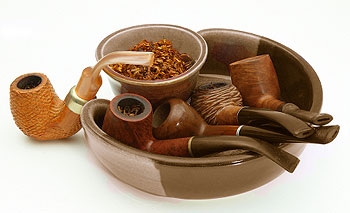 A: You’re welcome. It’s a lot of fun for me to be doing this column, as it often brings up things that I deal with on a daily basis, and therefore, tend to take for granted. Your question is a perfect example of this, as it’s something I just "do," often not paying much attention to the method, something which, at this point, is pretty much second nature. When evaluating some new leaf, I will sometimes smoke it in a variety of pipes, including clays, and will even roll it into a cigarette just to get a better sense for the pure taste of the tobacco itself. It’s an informative process, certainly, but it’s only the beginning of the story. As far as cobs are concerned, they deliver a sweet smoke, but it’s far from a neutral one, and I’ve found the same to be true of meerschaums. Each of these colours the taste of the smoke, as does briar. The only thing that could really be considered absolutely neutral is the glass pipe.
A: You’re welcome. It’s a lot of fun for me to be doing this column, as it often brings up things that I deal with on a daily basis, and therefore, tend to take for granted. Your question is a perfect example of this, as it’s something I just "do," often not paying much attention to the method, something which, at this point, is pretty much second nature. When evaluating some new leaf, I will sometimes smoke it in a variety of pipes, including clays, and will even roll it into a cigarette just to get a better sense for the pure taste of the tobacco itself. It’s an informative process, certainly, but it’s only the beginning of the story. As far as cobs are concerned, they deliver a sweet smoke, but it’s far from a neutral one, and I’ve found the same to be true of meerschaums. Each of these colours the taste of the smoke, as does briar. The only thing that could really be considered absolutely neutral is the glass pipe.
When evaluating a blend, though, I’ll smoke it in a variety of briars in order to have the best idea of how the blend will taste in the pipes that are most commonly smoked, and the briar leads the field in that respect by a substantial margin. Really, it doesn’t make a lot of sense to go through the "fine tuning" stage of a new blend in something that the blend will not likely see very often. The cleanest, purest expression of the tobacco would come from a glass pipe, but I don’t know of many in our coterie who routinely smoke or even own a glass pipe (I used to have one specifically made for tobacco tasting, but it’s long returned to its sandy beginnings), so the information gathered from smoking the blend in one might be interesting, but not particularly useful.
Neither would it really be beneficial to smoke the blend in a single briar. By using a variety of pipes, different sizes, different shapes, different brands, I can have a better idea of how a blend will perform in an overall sense, which is much more informative to the process. My take on this is that since briar tends to enhance the smoking experience in a way that other pipes don’t seem to, it’s important, even essential, to understand how a blend will interact with the noble wood, and that requires lots of fiddling with lots of pipes. I’ll also explore different packing methods, different smoking cadences, different environmental conditions just to see if a blend will likely perform for others as well as it does for me. Of course, the evaluation cannot be exhaustive, but it gives me a better foundation from which I can make adjustments. It’s a tough job, but someone’s got to do it.
From Victor: Greg, thanks for the many wonderful blends you provide the community to choose from. Two of my favorites are Chelsea Morning and now Lagonda. Both fit my taste well but at different times. When I want a well balanced English I smoke CM. When I want more Latakia and no Perique I choose Lagonda. My question is: I find Lagonda smokes quite a bit wetter than CM, and it leaves a sweet smelling residue in my pipes (not a big deal but noticeable). What accounts for this sweetness and the added moisture in the pipe? The sweet residue is ghosting my pipes. Like I said, this is not objectionable to me, but what accounts for it? Thanks.
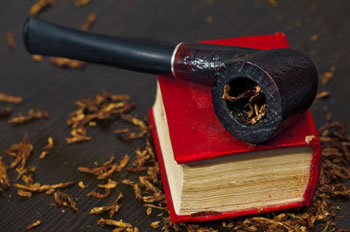 A: I’ll admit to being a little baffled by this. Lagonda is a very classic style latakia mixture, using only virginias, orientals and a generous measure of the smoky stuff, and no casings, sugars, or added flavourings. Because of the high percentage of dark tobaccos, which tend to be harder to keep lit, combustion isn’t as effortless as it is with something lighter, like Chelsea Morning, and that could have something to do with it smoking wetter for you. My advice there would be to pack a little looser, and above all, tamp only with a very gentle hand, allowing the weight of the tamper alone to do the work. This might mitigate the dampness you’re experiencing in the smoke.
A: I’ll admit to being a little baffled by this. Lagonda is a very classic style latakia mixture, using only virginias, orientals and a generous measure of the smoky stuff, and no casings, sugars, or added flavourings. Because of the high percentage of dark tobaccos, which tend to be harder to keep lit, combustion isn’t as effortless as it is with something lighter, like Chelsea Morning, and that could have something to do with it smoking wetter for you. My advice there would be to pack a little looser, and above all, tamp only with a very gentle hand, allowing the weight of the tamper alone to do the work. This might mitigate the dampness you’re experiencing in the smoke.
But, the real mystery to me is the sweet residue. The only thing that comes to mind is that there may be something haunting the briar from previous smoking that’s being brought back into the bowl by a combination of heat and the aforementioned moisture. Is that a possibility? Personally, I’ve never experienced this particular trait with Lagonda, so I can only grasp at straws. Please feel free to add more information, either in the comments to this edition, or as a separate email via the link below, and we can see if we can get to the bottom of this. Possibly, too, a reader or two might have some insight.
That’s a lot of words to basically say, "Hmmm. I might just be stumped on this one"
And, speaking of tamping, Shawn just sent this in: Hi Greg. I have a few questions about tamping (and who doesn’t, really?). First, does the type of tobacco and/or size of the bowl dictate how often you should tamp? Second, in a previous "Ask G. L. Pease" column you said that we should be tamping with only the weight of the tamper. That begs the question of how much should a tamper weigh? I normally use the flattened nail style tamper, because they’re super cheap, but are they too light?
A: Last things first. Too light would be much less of a problem than too heavy. I’ve got a massive thing machined from a stainless steel billet that makes me list to the starboard if I carry the thing in my pocket. It makes an excellent weapon; I could bludgeon anyone to the brink of oblivion with the thing, but it’s probably just a little too heavy for the effortless, gentle tamping I prefer.
As for the type of tobacco being an influence over tamping frequency, I’d have to say that the way the tobacco is packed and smoked is more likely to make a bigger difference. A flake, rolled into a sausage and stuffed into the bowl will require less frequent tamping, a coarse ribbon or cube cut probably more. My general rule is not to tamp until the pipe requires re-lighting, and then, only if it’s been smoldering long enough to have a substantial volume of fluffy ash.
Kevin queries: From the point of view of the blender of pipe tobacco, what determines the market-ready format that pressed tobacco will finally take? Why, that is, is one blend ready-rubbed, another is sliced and another, plug. Is it a marketing decision, as in an attempt to balance both flakes and ready-rubbed since some smokers prefer one over the other, or do characteristics of the blend determine which form is better? Both?
A: I wish I could point to market research, focus groups, preference studies and similar pulse points on the buying public’s wrist that drive these decisions, but, in my case, it would be a lie. The truth is that I often play with different forms of the same formula, and attempt to suss out which one works best to my own palate, which one I prefer. One exception to this is JackKnife, which comes in both a plug and a ready-rubbed form. The ready-rubbed came about as a result of a lot of guys emailing me saying, "I really like JackKnife Plug, but I’m not a guy who likes to fiddle so much with my tobacco, and I’m afraid I’ll cut the tip of my thumb off slicing this stuff up, so can you make a more convenient form?" It’s for these guys that I created the JackKnife Ready Rubbed version.
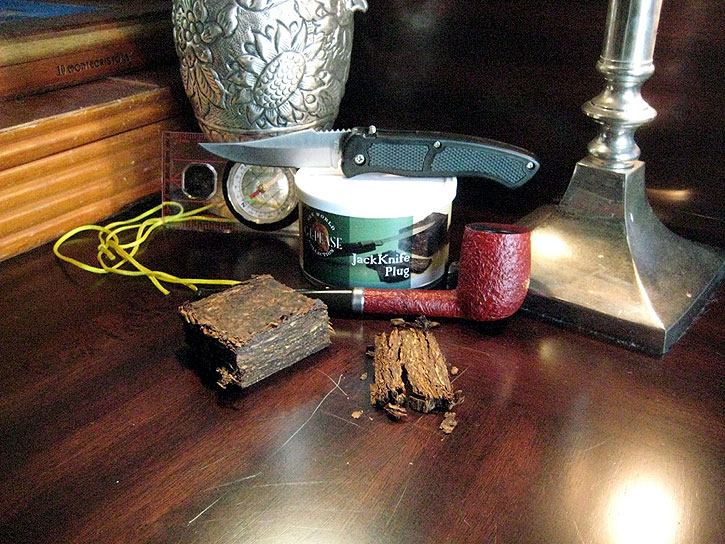
The result of doing this brought some interesting things to light. When the two versions are produced, beginning life with precisely the same ingredients, in precisely the same proportions, processed precisely the same way, they are indistinguishable from one another. That is, if I cut a slice off a plug, and rub it out, it will taste exactly like the RR version made at the same time. But, the two forms will quickly diverge. Within a matter of days, these same two tobaccos, tasted side-by-side, would seem to be cut from very different cloth. While the plug continues to undergo anaerobic fermentation deep within its core, the RR is exposed to air in abundance. In this case, the blend’s characteristics are dictated, at least to some extent, by the form in which it’s produced, not the other way round, in which the form would be dictated by the blend’s characteristics.
From Marshall: I bought a "shop pipe," a CAMPANILE 255, FROM THE Campus Smoke Shop at Bancroft and Telegraph, in 1963. Do you have any idea who the maker of this pipe might be? A personal question I know. I thought since you were in Berkley at that time you might know. I do enjoy your writings and tobaccos.
A: A flood of old memories were invigorated when I read your question. I think you’re referring to Whelan’s, which has been in that location, just down from the corner, for over 100 years, and still exists today, though certainly not in the same form it had when you bought your pipe in 1963. Even in the late 1970s, there was still a vibrant pipe smoking community in and around Berkeley, and shops like Whelan’s, Drucquer’s, Dave’s Smoke Shop, House of Lords, De Lauer’s and a few others did a thriving trade in pipes, tobaccos, cigars and exotic imported cigarettes. I bought my first GBD second from Whelan’s, a straight, squat bulldog from the case along the back wall of the shop.
Their shop pipes, like everyone’s, were produced by such venerable companies as Charatan, Comoy, GBD, Savinelli, Mastercraft, even Barling and Sasieni. In those days, many, possibly even most of the larger pipe companies custom stamped pipes for shops if they ordered a sufficient quantity, and since pipes were popular, and sold readily, it was easy to reach the quantity. The clue as to who made the pipe can be found in the country of origin stamping, and sometimes the shape number. Comoy, for instance, in the 1960s would have stamped "Made in London" in a circle over "England" in a straight line. If you provide all of the stamping details, we might be able to narrow it down.
Pete insists upon tormenting me with: I was just wondering if you had any experience of blending with Indonesian Tambolaka tobacco? I am really interested in trying this unusual leaf; discovering its taste and finding out how it works with other forms of tobacco. I don’t know of if it has ever been used in a commercially available blend. Could you enlighten me?
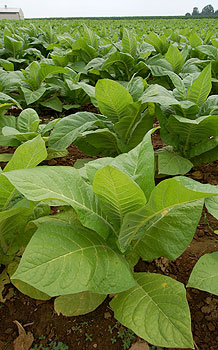 A: After everything I’ve heard about this stuff, that it’s intensely strong, and offers what some refer to as a "unique taste, not for the faint of heart" I think I’m more likely to cower in the corner, in the same way that I would if some spectre of terror were called forth from the dark dimensions of doom, materialized in my earthly presence by a malevolent sorcerer in a Lovecraftian manner, than attempt to explore its evil. Then again, I used to say that about Semois as well, until someone persuaded me to give it a try, and I found myself strangely seduced by the stuff. So, no, I haven’t yet had any experience with Tambolaka, but it’s not out of the question that I will play with it at some point in future.
A: After everything I’ve heard about this stuff, that it’s intensely strong, and offers what some refer to as a "unique taste, not for the faint of heart" I think I’m more likely to cower in the corner, in the same way that I would if some spectre of terror were called forth from the dark dimensions of doom, materialized in my earthly presence by a malevolent sorcerer in a Lovecraftian manner, than attempt to explore its evil. Then again, I used to say that about Semois as well, until someone persuaded me to give it a try, and I found myself strangely seduced by the stuff. So, no, I haven’t yet had any experience with Tambolaka, but it’s not out of the question that I will play with it at some point in future.
Dave enquires: Mr. Pease, I have looked for information on Maryland tobaccos and can’t find much. I am just curious about this type of leaf and wonder if it is in fact, grown in Maryland. Are there blends that feature this leaf? Or is it more of a condiment? Is it lumped in with VA tobacco because of its proximity to Virginia? I am just curious because I haven’t tried it and am just curious. It seems somewhat elusive and that is what makes it interesting to me. Thanks!
A: Your timing is excellent, as I’ve been spending some time reacquainting myself with this leaf lately. Maryland tobacco is, in fact, grown in Maryland, and it’s interesting stuff. The flavour profile is similar to burley, and, like it’s Southern cousin, it bears little to no sugars in the cured product, and absorbs flavourings readily. Unlike burley, however, its nicotine content is very low, and its easy burning characteristics and chameleon-like ability to adapt to its surroundings make it a useful tobacco to add to a blend that needs a little taming. Where it’s a fantastic backup singer, but it’s not so great as a soloist. I don’t know of any blends that feature it, for that reason. Its use has fallen out of favour in recent years, though it still has its place. I used it in one of my old blends from my previous label (Inverness) and I’m working on a few things now. Stay tuned.
As always, keep your cards and letters coming.
-glp
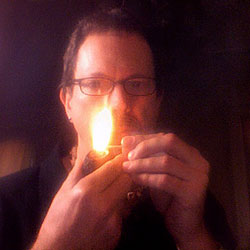
Since 1999, Gregory L. Pease has been the principal alchemist behind the blends of G.L. Pease Artisanal Tobaccos. He’s been a passionate pipeman since his university days, having cut his pipe teeth at the now extinct Drucquer & Sons Tobacconist in Berkeley, California. Greg is also author of The Briar & Leaf Chronicles, a photographer, recovering computer scientist, sometimes chef, and creator of The Epicure’s Asylum. |


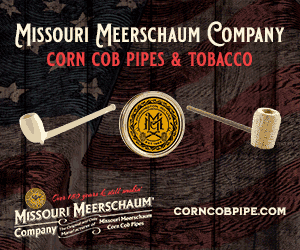

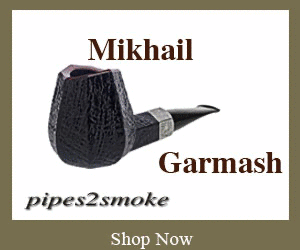



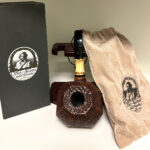
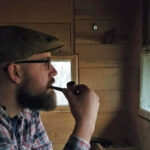
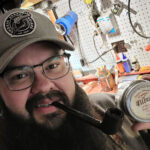






Another smashing article. Sad to hear about your glass pipe. Would have loved to see a few photos of it. Glad to hear you’re tinkering around with new types of leaf. Maybe the Maryland leaf can tame the Tambolaka enough for a blend like no other. 🙂 Happy Smoking.
Entertaining and informative as always, Mr. Pease. I especially like your conjecture on why JackKnife plug and ready-rubbed are different.
Greg, I just want to say thank you for what you do. Sincerely, thank you. If there’s ever anything I can do to help, or if you’re ever in Georgia, want to get out of the city, and want a farm-raised, home-cooked meal, let me know.
Great read Sir, and for me comes at the perfect time. I always have 6 to 8 tins open at any given time and have been thinking about just what you proposed. I have been stuck in reaching for the tin that says ‘Morning’ on it at daylight, and ‘Night’ at the end of the day. Lucky for me no one makes a ‘Midnight’ smoke.
Well I’m joining you Sir. Smoking out my open tins so I can concentrate on one at a time. What a good idea!
Steve
Thanks for the kind words, gentlemen. Glad you enjoyed the installment. Now, I’m worried that I’ve shot myself in the foot, a little, TopD. If people start smoking what they have, and it’s not my blends, I’m on the short street to bankruptcy. I take it all back. Buy LOTS of tobaccos, especially mine, open them all, and smoke with reckless abandon!
Sir Greg, I too have several tins going at once and your blends seem to me a majority most times. One in particular is JK Reddi-rubbed which by the way is OUT OF STOCK at a certain etailer that I frequent my orders to! And you said there wasn’t much market for the reddi-rubbed version, hmph! Somebody’s likin’ it. Guess it’s time for that 8oz. to become available? Hope so. I do smoke JKRR with reckless abandon but when I pay attention to it late at night I’m in heaven. I’m really glad that the weather has been screwy lately here in Delaware. It is causing me to smoke more latakia blends and Virginia blends. A straight VA blend on a hot humid day is just the ticket, then later it’s JackKnife!
You just enlightened me on Maryland tobacco Greg…I think. I’m from Calvert County,Md., born and raised. This county’s income was at the time I was growing up was tobacco and slot machines. It just dawned on me from this Md.tobacco question,the tobacco being grown wasn’t burley but Maryland tobacco,possibly??
I still remember the smell of the tobacco warehouses in Upper Marlboro, Md. greeting one several miles before getting there.I know the problem when one assumes…but to your vast knowledge, was burley grown in Md. or was the tobacco grown in Md. Maryland tobacco.? All the tobacco fields now have been relegated to corn,and developements….
Hi, I ran across an old pipe box from Druquer and sons. I have always been interested in pipes. So out of curiosity I decided to look this company up on line. I found and read some of the blogs about the shop and I noticed someone saying about a Barling pipe. Is there anyway I can buy a Barling pipe? What was kind of weird was when I typed in barling it came up with no results. But when I went to images well there were photos of pipes, people, bi Planes etc.. Then about half way down their was a photo of my brother in law! A Barling!! Well, this whole thing was fun to explore! So of course me being a Barling I would really love to not only own one but smoke it too!!
. Thanks so much for reading this! Nanette Barling